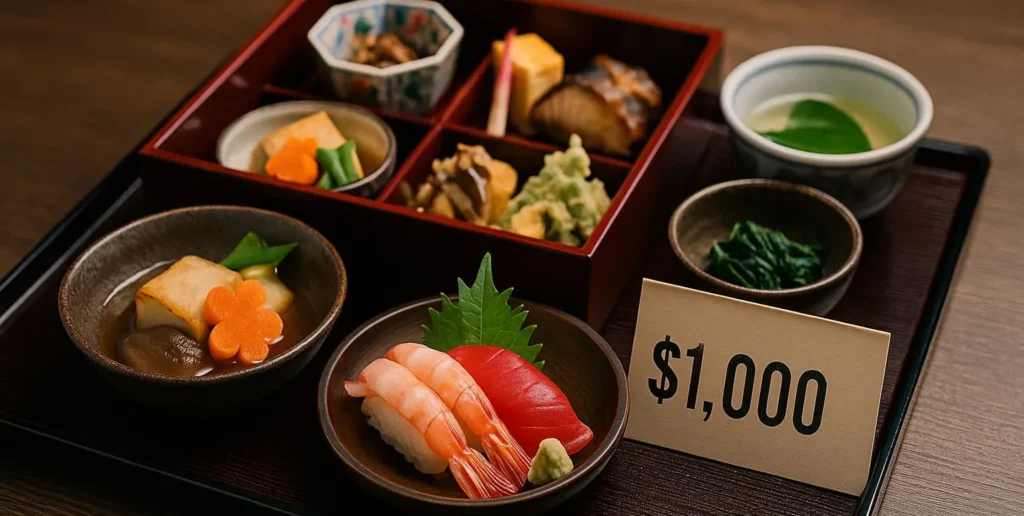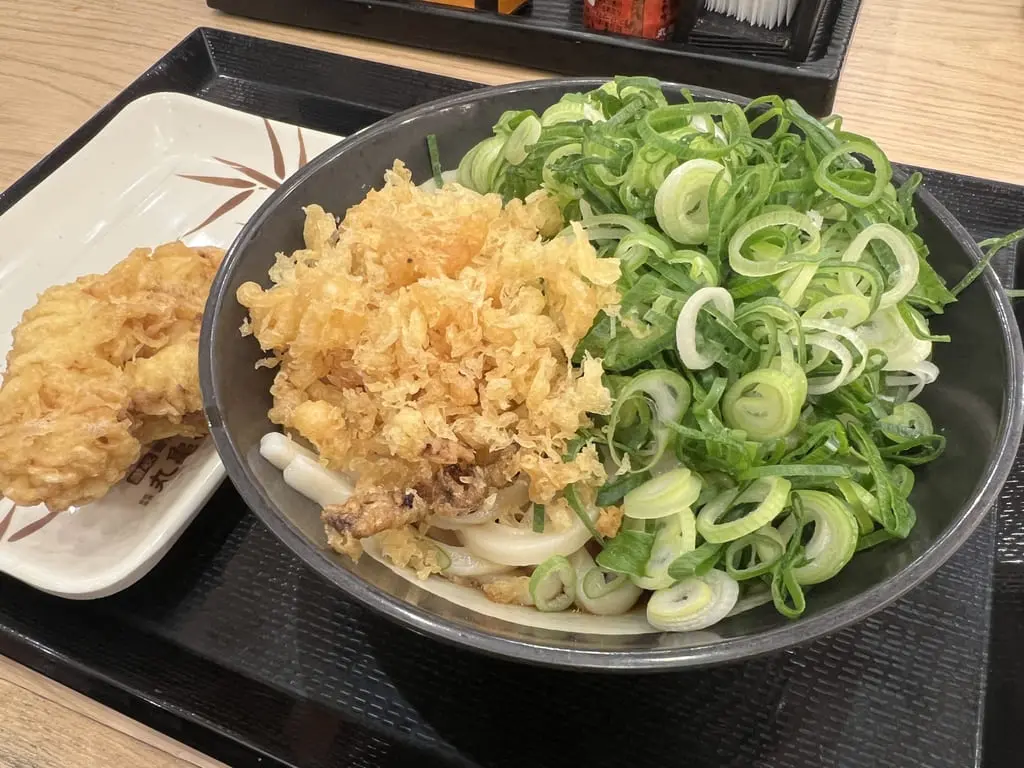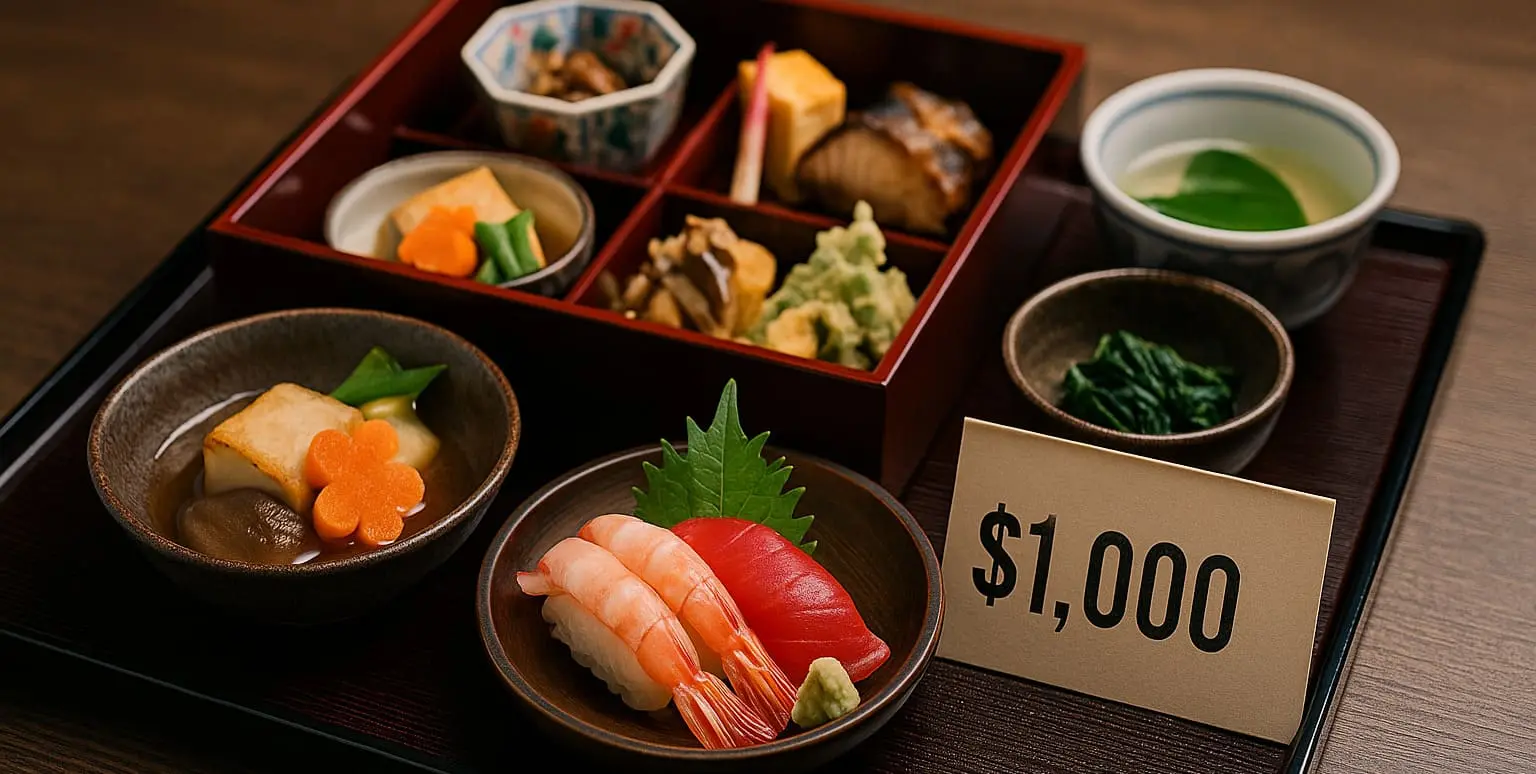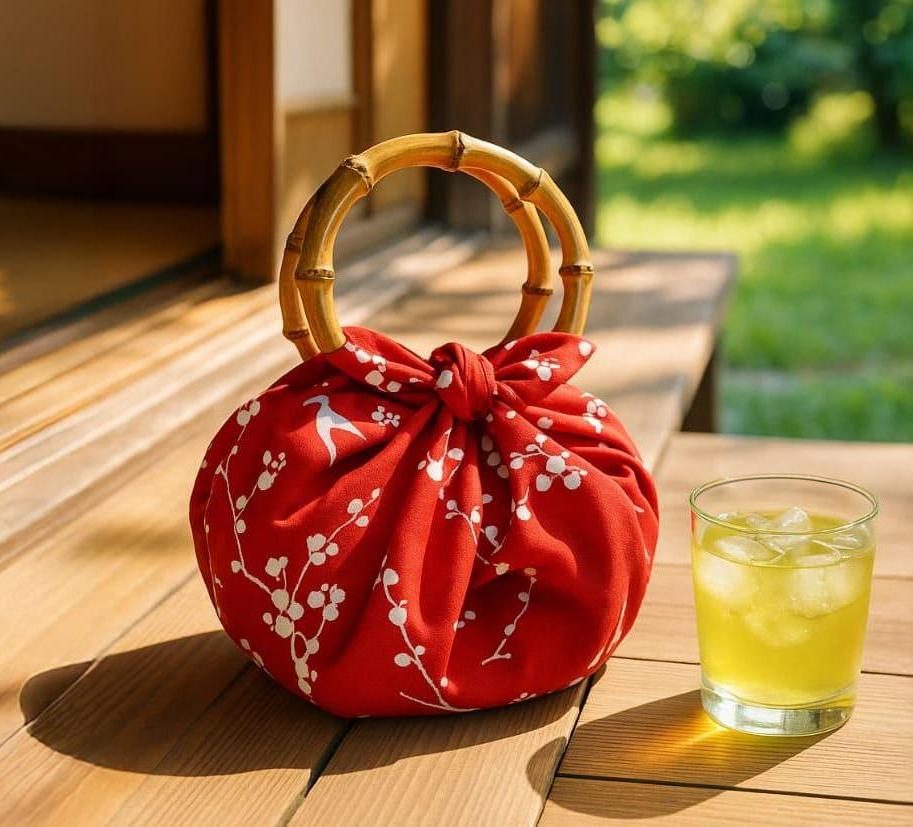Is it worth spending $200 on sushi in Japan?
That might sound like a simple question.
But for many travelers, it’s surprisingly hard to answer with confidence.
That’s because food in Japan—like anywhere else—isn’t just about how much you’re willing to spend.
Some dishes truly shine only when you splurge.
Others? You can enjoy the real thing for just a few bucks.
The tricky part is: you won’t know which is which unless you really understand the culture.
Now, you might be thinking:
“Can’t I just pay more for everything and play it safe?”
That’s a valid instinct.
Clearly, you have enough money to use bills as napkins—and good for you.
But there’s one thing you may be overlooking.
Let’s say you’re living in the U.S., and a tourist shows up in your town.
They say:
“Since I’m in America, I want to try some high-end local food—like a $100 gourmet fried chicken!”
You’d probably want to stop them and say:
“Whoa there. Fried chicken doesn’t work like that.”
Exactly.
In this article, I’ll walk you through which iconic Japanese dishes are worth the splurge—
and which are best enjoyed the way locals do: simple, cheap, and satisfying.
Sushi is just the start.
Let this be your guide to eating smart in Japan.

1. When to Splurge (and When Not To): 5 Iconic Japanese Dishes
1-1. Is SUSHI in Japan Worth the Splurge?
If you’re the kind of person who insists that movies are meant to be seen in theaters, not on your couch—
then yes, set aside at least $100 for sushi in Japan.
That means you’re aiming for a proper high-end sushi experience—where history, reputation, and craftsmanship all align.
Expect to pay somewhere between $100 and $300.
And honestly? That’s the right call.
True sushi is about more than just flavor.
It’s the quality of the ingredients, the seamless balance between rice and topping (a matter of serious skill),
and the atmosphere that makes you feel like you’re part of something distinctly Japanese.
You’ll leave with a sense of pride: “I had sushi in Japan.”
The next-best choice? Conveyor belt sushi.
Most places will give you a decent experience for around $30.
It may not be life-changing, but it’s good.
You’ll be able to say—perhaps a bit modestly—
“I had something like sushi in Japan.”
And here’s a twist: even conveyor belt sushi comes in tiers.
Some premium spots will run you $50–$70, and the quality jumps noticeably.
With those, you might even claim,
“I basically had real sushi.”
What you shouldn’t do is grab a pack of supermarket or convenience store sushi, eat it, and declare the mission accomplished.
That’s like watching a Star Wars parody and thinking you understand Anakin’s pain.
It’s not just inaccurate—it’s borderline blasphemy.
These are “fish-on-rice” snacks for people who forgot to pack a bento.
Think of them as sushi-shaped rice balls.
Not bad for what they are—just don’t confuse them with the real thing.
1-2. Is TEMPURA in Japan Worth the Splurge?
Tempura isn’t food.
It’s technique.
Okay—that’s an exaggeration.
But when we’re talking about whether it’s worth paying more,
it’s probably the most honest answer you’ll get.
If your image of tempura is a limp shrimp in a soggy coat,
you haven’t had tempura.
You’ve had sorrow, deep-fried.
Real tempura is delicate and crisp,
with a lightness that actually makes a sound when you bite into it.
The batter is whisper-thin, the oil is clean,
and the ingredient—not the crust—is the main event.
If you’re going to try tempura in Japan,
go to a specialist shop and expect to spend at least $30.
Yes, there are rare places that serve good tempura for $10.
But that’s like trying to find a lost contact lens in the desert.
It’s technically possible—
but is that really how you want to spend your trip?
1-3. Is JAPANESE CURRY in Japan Worth the Splurge?
If your goal is to try “Japanese curry,”
you don’t need more than $10 to $15.
Just head to CoCo Ichibanya or a decent, no-frills curry shop.
Japanese curry isn’t Indian curry.
It’s not French-style either.
It’s a strange, wonderful beast that evolved into its own thing—thick, sweet, comforting.
There are two smart paths:
- Option A: Go to CoCo Ichi, the people’s curry chain, and build your own bowl with whatever toppings call to you.
- Option B: Find a small, slightly obsessive curry shop—usually run by someone who loved curry so much they opened a restaurant.
(It’s usually cheap, and usually great.)
What you don’t want is the overpriced, tourist-trap version of Japanese curry.
The kind that throws in wagyu beef and high-end seafood,
like a movie that casts two A-list stars with zero chemistry.
These fancy ingredients often end up clashing with the curry itself—
not elevating it.
1-4. Is SOBA in Japan Worth the Splurge?
Soba is the ultimate food deception.
Cheap soba and high-end soba look almost identical—
but taste and aroma tell a completely different story.
Take standing soba shops, for example.
What you’re getting there isn’t really soba.
It’s gray, limp, and utterly forgettable—like edible shoelaces.
They’re designed for busy office workers who need fuel, not flavor.
Not the kind of thing you should waste one of your precious vacation meals on.
Real soba, on the other hand, has a nutty aroma that hits your nose more than your tongue.
The texture is firm, hand-cut, and unmistakably crafted.
It’s a quiet kind of power.
Subtle, yes—but serious.
So yes, go to a soba specialist.
And spend around $20.
1-5. Is UDON in Japan Worth the Splurge?
Udon is Japan’s other famous noodle dish—
often mistaken for soba’s chubby cousin.
But here’s the twist:
with udon, the rules are reversed.
You absolutely do not need to splurge.
Why?
Because the main ingredient—wheat flour—only takes you so far.
There’s a ceiling to how fancy it can get.
Chains like Marugame Seimen and Hanamaru Udon serve excellent bowls,
usually for around $5, toppings included.
They’re fast, satisfying, and surprisingly high in quality.
If you wander into a “luxury udon” place,
you might find yourself wondering:
“Wait… why is there gold leaf on my bean sprouts?”
That said, there’s one thing worth noting.
Udon isn’t just a food—it’s a local identity.
Each region of Japan has its own variation:
Sanuki in Kagawa, Inaniwa in Akita, Mizusawa in Gunma, Ise in Mie…
Dozens of distinct styles, each with their own fanbase.
In these cases, you’re not chasing quality.
You’re embracing tradition.
So if you’re in a region that’s proud of its noodles, find a well-loved shop and enjoy the experience.

2. The Quick Matrix: What to Eat, Where, and How Much to Care
Let’s be honest—
not every Japanese dish needs deep reflection or big decisions.
So here’s your cheat sheet, just in case you’re unsure.
A quick matrix that shows you, at a glance:
what to eat, where to eat it, and how much to care.
| Food | High-End / Specialty | Casual / Chain | Suggested Price & Why |
|---|---|---|---|
| Sushi | ✅ | $100+ The high-end experience is on another level. | |
| Tempura | ✅ | $30+ Huge quality gap between real tempura and the rest. | |
| Curry | ✅ | $10–15 Cheap curry (CoCo Ichi or small shops) is often better. | |
| Soba | ✅ | $20 Flavor and technique vary wildly—worth paying for. | |
| Udon | ✅ | $5 Simple dish where price doesn’t equal quality. | |
| Ramen | ✅ | $5–10 Most ramen falls in this range. If it’s expensive, skip—it’s probably just for show. | |
| Wagyu Beef | ✅ | $30+ Price and quality are closely linked—up to a point. | |
| Gyudon (Beef Bowl) | ✅ | $4–7 Chain gyudon is the real deal—cheap and satisfying. | |
| Tonkatsu | ✅ | $10–20 Quality ingredients and frying skill make a big difference. | |
| Unagi (Eel Bowl) | ✅ | $30+ Huge difference depending on source and prep. | |
| Takoyaki | ✅ | $3–8 Great as a snack. Street stalls and takeout spots are best. | |
| Okonomiyaki | ✅ | $5–12 Local joints often beat the fancier spots. | |
| Monjayaki | ✅ | $6–15 Most monjayaki falls in this range. If it’s expensive, skip—it’s probably just for show. |
3. Final Takeaway
Is it worth spending $200 on sushi in Japan?
That’s where this article began.
And the answer is—yes.
But is that the greatest meal you can have in Japan?
Not necessarily.
It’s not the $300 sushi.
It’s not the $4 beef bowl.
Every dish has its own story, its own value.
What stays with you isn’t the price or the presentation,
but how it hit you, in that moment.
So if someone tells me,
“The best thing I ate in Japan was a rice ball from the convenience store,
right after I landed at the airport—because I was starving,”
I’d say:
“Exactly. That’s the one.”





